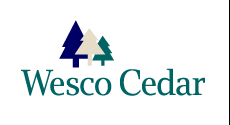 |
 |

|
Approval & SpecificationsCalifornia State Building Code - Title 24 "FIRE-RETARDANT SHAKES AND SHINGLES are wood shakes and shingles complying with U.B.C. Standard 15-3 or 15-4 impregnated by the full-cell vacuum-pressure process with fire-retardant chemicals, and have been qualified by U.B.C. Standard 15-2 for use on Class A, B, or C roofs, and which comply with ICBO-ES Acceptance Criteria Subject AC09. Each bundle of treated wood shakes and shingles shall bear labels from ICBO accredited quality control agency identifying their roof-covering classification and indicate that the product complies with ICBO-ES Subject AC09."California Department of Forestry & Fire Protection California State Fire Marshal Listing Service Listing No.: 4150-1450:100 State of California, Assembly Bill No. 747 - Valerie Brown Section (j) (1) "No wood roofing materials shall be sold in this state unless: On and after January 1, 2001 the materials have passed at least 5 years of the 10-year natural weathering test." (2) "The 10-year natural weathering test required by this subdivision shall be conducted in accordance with 15-2 of the 1994 edition of the Uniform Building Code at a testing facility recognized by the State Fire Marshal." The UL-790 10 Year Weathering Test: The Standard in Determining Fire Resistance of Roof Covering Materials Test procedures to determine the fire resistance of roof coverings were originally developed by Underwriters Laboratories prior to 1920. The test standard (UL-790) has been amended over the years to reflect changes in roofing materials. The tests have also been adopted by the National Fire Protection Association (NFPA 256) American Society for Testing and Materials (ASTM-E108), and Uniform Building Code (UBC 15-2) The tests provide comparable fire resistance values among roofing materials. The tests are considered to be representative of fire conditions that originate outside of homes. All roofing products are subjected to three tests: Intermittent Flame Test Spread-of-Flame Test Burning-Brand Test With the introduction of fire retardant wood roofing materials, the tests were amended to include additional tests for wood products. These are: Flying-Brand Test Rain Test Weathering Test Intermittent Flame Test: This test shows a roofing material's resistance to flames from adjacent burning material. The roofing materials are exposed to intermittent gas flames of 1,300°F to 1,400°F. A 12 miles per hour wind is applied to the test deck until the test is completed. Spread-of-Flame Test: A spread-of-flame test is used to determine the fire resistance of most building materials. For roofing materials, the roof deck is exposed to a gas flame of 1,300°F to 1,400°F for 4 to 10 minutes. A 12 miles per hour wind is applied to the test deck until the test is completed. Burning-Brand Test: This test exposes roofing materials to burning brands constructed of wood, simulating an exposure to burning materials. A typical burning ember in a large fire is approximately 1/4" in size. The burning brands used in this test are 60 to 1,000 times that size. A 12 miles per hour wind is applied to the test deck until the test is completed. Flying-Brand Test: Treated wood roofing material is tested to determine if the product will create flying embers in a fire situation. The treated wood is exposed to a gas flame of 1,300°F to 1,400°F for 4 to 10 minutes. The wind applied to the test deck is increased to 18 miles per hour during this test. Rain Test: This test is designed to try to flush fire retardants out of the treated wood. The roofing material is exposed to twelve weekly cycles of 96-hours of water exposure (67.2 inches of water) and 72 hours of drying at 140°F. The wood is subjected to a total of 806.4 inches of rain, equivalent to 24 years of rain in the Dallas/Ft. Worth area. The roofing material removed from the weather chamber is again tested to the Intermittent Flame, Burning-Brand, and Flying-Brand tests. Weathering Test: Treated wood roofing material is the only product exposed to actual outdoor weather conditions when tested for fire retardancy. After one, two, three, five, and ten years, the roofing material is subjected again to the Intermittent Flame, Burning-Brand, and Flying-Brand tests. Conditions of Approval At no time during or after these tests can: (1) Any portion of the roofing material create flying embers that will endanger other structures. Nor can any portion of the roof deck fall to the ground in the form of a glowing brand. (2) There be any burn-through of the roof deck. |
|||
Home |
About Wesco Cedar |
Cedar Benefits |
Products |
Technical Information |
Contact Wesco Cedar Copyright © 2012 Wesco Cedar. All rights reserved. |